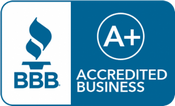
Repair Regulations Under Section 179
Published on August 27, 2015
If you buy, build, or repair business assets, you probably have questions when trying to decide whether your costs are currently deductible on your federal income tax return or whether they’re capital improvements. The answer falls under Section 179 of the tax code, and has always been an important one for small business owners. Together with their accountants, business owners must determine which costs related to fixed assets must be capitalized and which can be expensed. Now, final “repair regulations”, an attempt to resolve the controversy over how to classify certain costs, are making this decision process even more difficult, and are especially impactful to the manufacturing, retail, hospitality, and utilities industries.
Are your expenses “repair or ordinary maintenance” that can be deducted on the current year’s tax return, or are they “improvements” that must be capitalized and depreciated over the life of the asset? The answer can impact your total deduction -- and your bottom line.
Expense vs. Capitalize. And what is Safe Harbor?
In general, taxpayers must capitalize and depreciate amounts used to acquire or produce property. However, a taxpayer can elect to follow the minimum capitalization policy used for financial statement purposes, as long as the policy is in writing and in effect as of the beginning of the year for which the election is made, and requires that each invoice or item of $500 or more is capitalized. The threshold is increased to $5,000 for taxpayers with “applicable financial statements,” which typically means financial statements that are audited by a CPA. So, if the required $500 or $5,000 policy is in place, the taxpayer can deduct amounts on a per-invoice or per-item basis if the cost is under the threshold. Otherwise, the item must be capitalized and depreciated over time like other fixed assets. But because these thresholds are just “safe harbor” amounts, the IRS has given its auditors leeway to accept higher thresholds on a taxpayer-by-taxpayer basis if it clearly reflects income.
The election to follow the policy used for financial statement purposes is made annually. But if made, it is important to note that the election also applies to materials and supplies as well as costs of items with a useful life of 12 months or less, making these items subject to the $500/$5,000 safe harbor rule for capitalization.
What can be deducted?
De minimis purchases
In general, you can deduct the cost of tangible property purchased during a taxable year if the amount you pay for the property is less than $500 per invoice, per item. There are no partial deductions (so if the asset is more than $500 you’re out of luck), and this safe harbor does not apply to intangible assets such as computer software.
Routine Repairs and maintenance
For buildings, “routine” means maintenance you expect to perform more than once in a ten-year period. The costs for material additions or defects or for adapting your property to a new or different use are not considered routine maintenance. These costs should be capitalized.
For other assets, “routine” is defined as maintenance you expect to undertake more than once during the asset’s depreciable class life.
Improvements
Generally, improvements you make to your business building are capitalized and depreciated over the life of the building. If your business’ gross receipts are less than $10M and the unadjusted basis of your building is less than $1M, you may write off the cost of improvements.
You can make the election annually on a building-by-building basis for property you own or lease by filing a statement with your tax return. To qualify, the total amount you pay during the year for repairs, maintenance, and improvements cannot be greater than $10,000 or 2% of the unadjusted basis of the building, whichever is less. The total includes amounts you deduct under the “repairs and maintenance” and “de minimis” safe harbors.
Materials and Supplies
Incidental materials and supplies (supplies for which you do not maintain an inventory) costing less than $200 can be expensed in the year of purchase. This safe harbor does not affect prior rules for deducting materials and supplies, such as restaurant smallwares.
This is a very short summary of repair regulations. In reality, these rules are anything but clear and concise. They contain numerous and complex provisions that can either save or cost you money. Please consult with your CPA before classifying any such assets.






